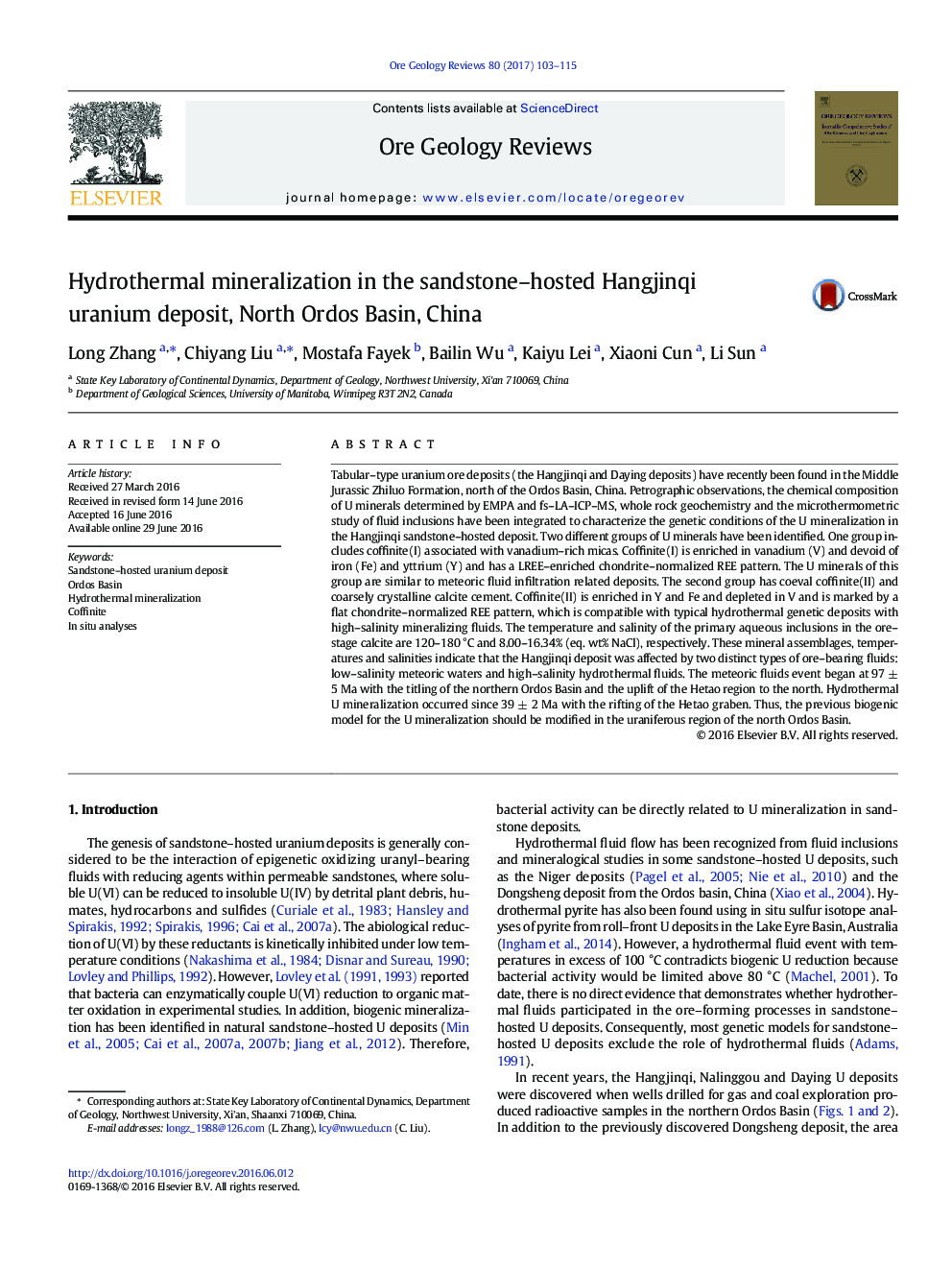| کد مقاله | کد نشریه | سال انتشار | مقاله انگلیسی | نسخه تمام متن |
|---|---|---|---|---|
| 6435589 | 1637226 | 2017 | 13 صفحه PDF | دانلود رایگان |

- EMPA and fs-LA-ICP-MS were performed for in-situ analyses of U-minerals in the Hangjinqi deposit.
- Two distinct types of ore-forming fluids are identified: low-salinity meteoric waters and high-salinity hydrothermal fluids.
- With the discovery of hydrothermal mineralization, the previous biogenic model should be modified for the U deposits.
Tabular-type uranium ore deposits (the Hangjinqi and Daying deposits) have recently been found in the Middle Jurassic Zhiluo Formation, north of the Ordos Basin, China. Petrographic observations, the chemical composition of U minerals determined by EMPA and fs-LA-ICP-MS, whole rock geochemistry and the microthermometric study of fluid inclusions have been integrated to characterize the genetic conditions of the U mineralization in the Hangjinqi sandstone-hosted deposit. Two different groups of U minerals have been identified. One group includes coffinite(I) associated with vanadium-rich micas. Coffinite(I) is enriched in vanadium (V) and devoid of iron (Fe) and yttrium (Y) and has a LREE-enriched chondrite-normalized REE pattern. The U minerals of this group are similar to meteoric fluid infiltration related deposits. The second group has coeval coffinite(II) and coarsely crystalline calcite cement. Coffinite(II) is enriched in Y and Fe and depleted in V and is marked by a flat chondrite-normalized REE pattern, which is compatible with typical hydrothermal genetic deposits with high-salinity mineralizing fluids. The temperature and salinity of the primary aqueous inclusions in the ore-stage calcite are 120-180 °C and 8.00-16.34% (eq. wt% NaCl), respectively. These mineral assemblages, temperatures and salinities indicate that the Hangjinqi deposit was affected by two distinct types of ore-bearing fluids: low-salinity meteoric waters and high-salinity hydrothermal fluids. The meteoric fluids event began at 97 ± 5 Ma with the titling of the northern Ordos Basin and the uplift of the Hetao region to the north. Hydrothermal U mineralization occurred since 39 ± 2 Ma with the rifting of the Hetao graben. Thus, the previous biogenic model for the U mineralization should be modified in the uraniferous region of the north Ordos Basin.
Journal: Ore Geology Reviews - Volume 80, January 2017, Pages 103-115